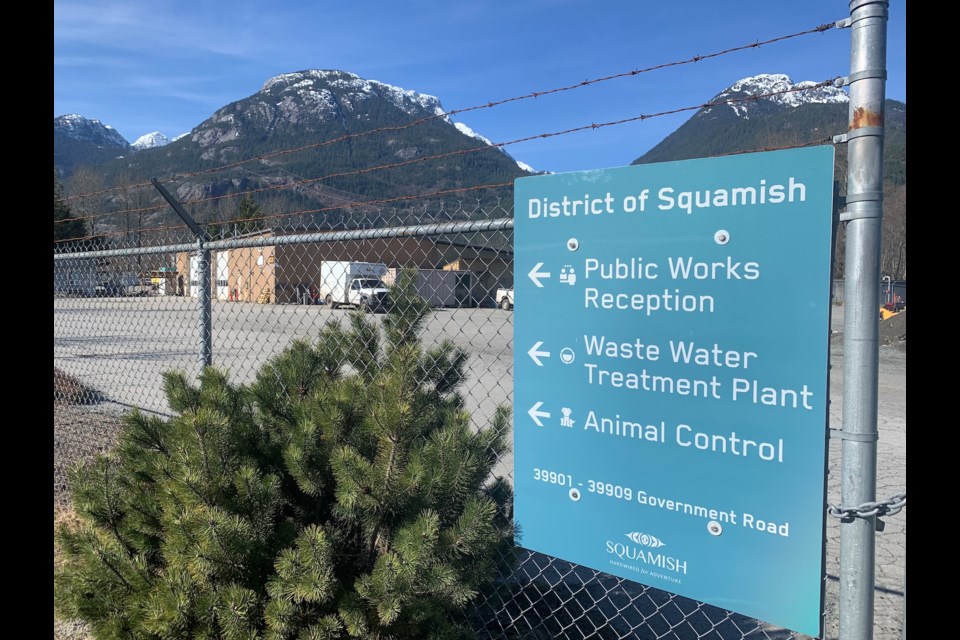After a surprise rejection, District council is opting to have a second go at persuading the public to approve a loan authorization bylaw for the public works building.
Over a month ago, the $16-million loan authorization bylaw was stunted by an alternative approval process (AAP) where about 10% of the voting population rejected the proposal.
An alternative approval process is initiated during big decisions like a pricey loan. It allows people to vote against a proposal. If 10% of the voting population sends in a ballot expressing their displeasure with the idea, it is forced to go to a referendum.
On April 5, elected officials and staff said they hope to persuade the public to permit them to amass funding for what they've described as a non-optional, critical piece of infrastructure.
Members of council unanimously voted in favour of having staff prepare a new long-term borrowing bylaw for the District of Squamish public works facility construction project.
This borrowing bylaw will then be subject to a referendum that will take place on Oct. 15, on General Local Election Day.
That day was chosen because it would be the most convenient and cost-effective opportunity to have residents vote on the matter, as they would already be at the polls for municipal elections.
However, council also authorized the creation of a new alternative approval process, which they hope will allow them to gain approval of the matter before October.
They reasoned that it would be best to get public approval for this project before voting day, as this infrastructure is too vital to be an election issue.
"The intent…was to do the alternate approval process as quickly as possible," said Coun. Doug Race, who amended the original motion to include a new AAP. "And if that failed, then take it to referendum. That's the intent of my amendment."
Race added that the building is at the top of the list of priorities.
"This building is a must," he said. "And the sooner, the better, certainly as far as cost goes, but just as far as the community facility goes."
Mayor Karen Elliott said that the creation of the building is too important to leave up to chance.
"I would like to keep this out of the election cycle if at all possible," said Elliott. "I think that with a more aggressive information campaign from the District, I think with council understanding their role to aggressively promote this alternative approval process and not take them for granted ever again. Given that our community is subject to, you know, some organized misinformation campaigns. I find it ironic that the first people [the public] reach out to when they're in trouble with a burst pipe, or they can't get anything — snow cleared from their roads or branches have fallen down — they reach out to public works."
Coun. John French said he was hesitant to create extra work for staff, but said that he believed that District bureaucrats could pull off council's ambitious instructions for the new alternative approval process and the referendum.
There was also support from Coun. Eric Andersen.
"We all need to be mindful of this; the community needs to be mindful of this," said Andersen. "And I'm confident that we here on this team will be lending our voice to reason in approaching these tasks before us."
Funding to revamp the public works facility is urgently needed, staff said.
"The current state is the staff of 60 have outgrown the premises, and that's on both the office and the maintenance side. The office and admin staff are adding two and sometimes three…people into office space designed for one," said Kal Bragg, director of facility planning and construction.
"There's insufficient indoor bays to maintain and install fleet equipment."
There are other challenges for staff, he said.
"There's not enough locker space for staff. For all staff, there is insufficient quarters, including washrooms. There's no showers…for public works staff, [which] is difficult. They're dealing with waste and water on a daily basis. They have to go home and shower. And it doesn't make B.C. build code in a number of areas."
Altogether, he said this reduces the community's resilience to natural disasters or events.
Chief financial officer Heather Boxrud said the now $18 million needed for the project could come via selling municipal assets, increased property taxes, or borrowing.
Paying for the project by raising taxes over one year would cost about $136 per residential property owner for every $100,000 of assessed value. This amount would be about $350 for commercial property owners.
If the tax increase were spread over two years, this would cost $68 per $100,000 of assessed value for residents and $175 per $100,000 for commercial properties, she said.
On the other hand, borrowing the funds over 20 years, would cost residential property owners about $9.50 per $100,000 of assessed property value. Commercial owners would pay $24 per $100,000 of assessed value.
A 75%-25% split of borrowing and selling municipal assets is recommended, Boxrud said, as it would spread the cost of the building over a greater period. This would mean that people moving to Squamish in the future would also help pay the bill, not just current residents.



